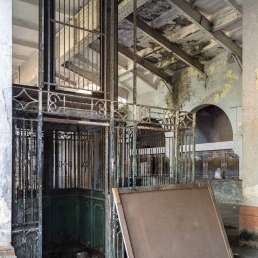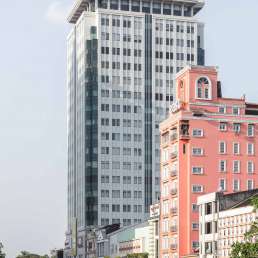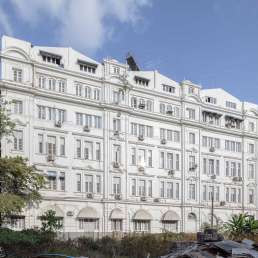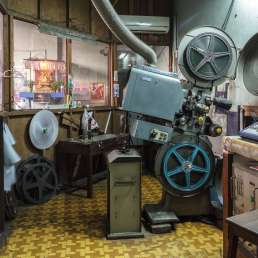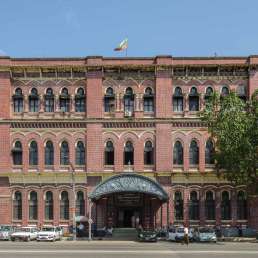Address: 152 Bo Myat Tun Road
Year built: 1972-1974
Architect: U Ngwe Hlaing
Returning from the 1970 World Exposition in Osaka (Japan), General Ne Win was so taken with the Burmese pavilion displayed there that he decreed a vast replica be built in Yangon, on Kandawgyi Lake. The Burmese pavilion in Osaka itself was inspired by the Pyi Gyi Mon Royal Barge used by Burmese kings for ceremonial processions in Mandalay, seat of the royal court in the second half of the 19th century. Kandawgyi Lake was created by the British colonial administration to provide clean water to the city. It sources its water from nearby Inya Lake through underground pipes.
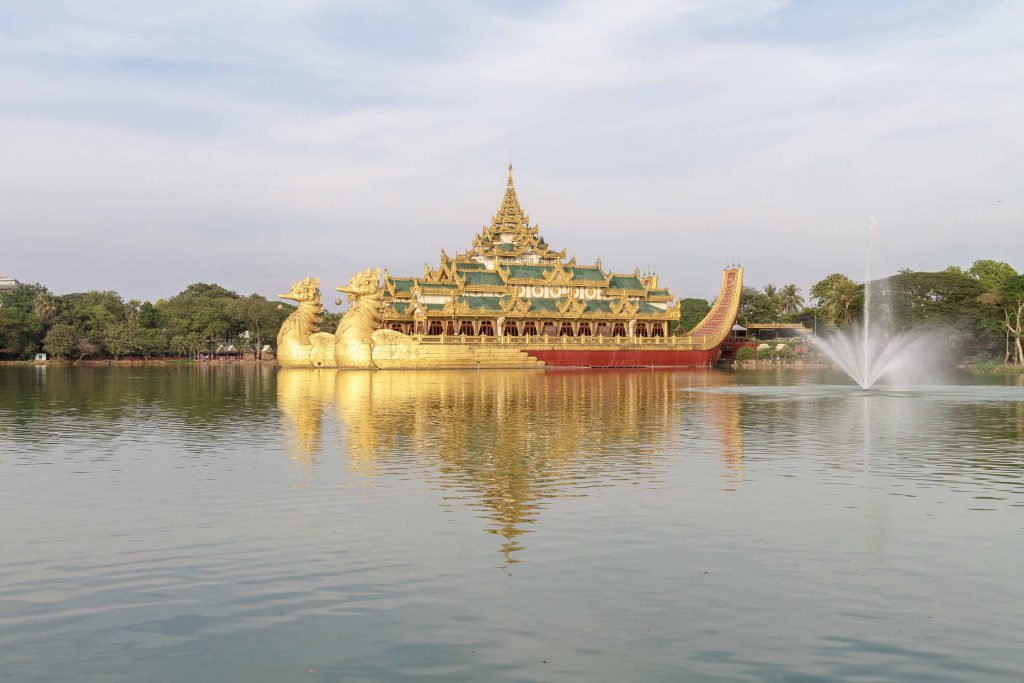
Karaweik Palace was built between 1972 and 1974, off the eastern shore of the lake. Its dimensions are impressive (82 × 39 metres). Its gold coating glistens at night, illuminated by massive spotlights. It is bulkier and less delicate than the two versions that inspired it, in Mandalay and Osaka. The name Karaweik is derived from the mythical birds adorning the front of the boat. The seven-tiered pyatthat roof is a classic display of traditional Burmese architecture, echoing the royal palace in Mandalay. A pavilion in front of the palace contains a restaurant hosting dinner shows featuring traditional dances. The venue can also be hired for special celebrations and events.
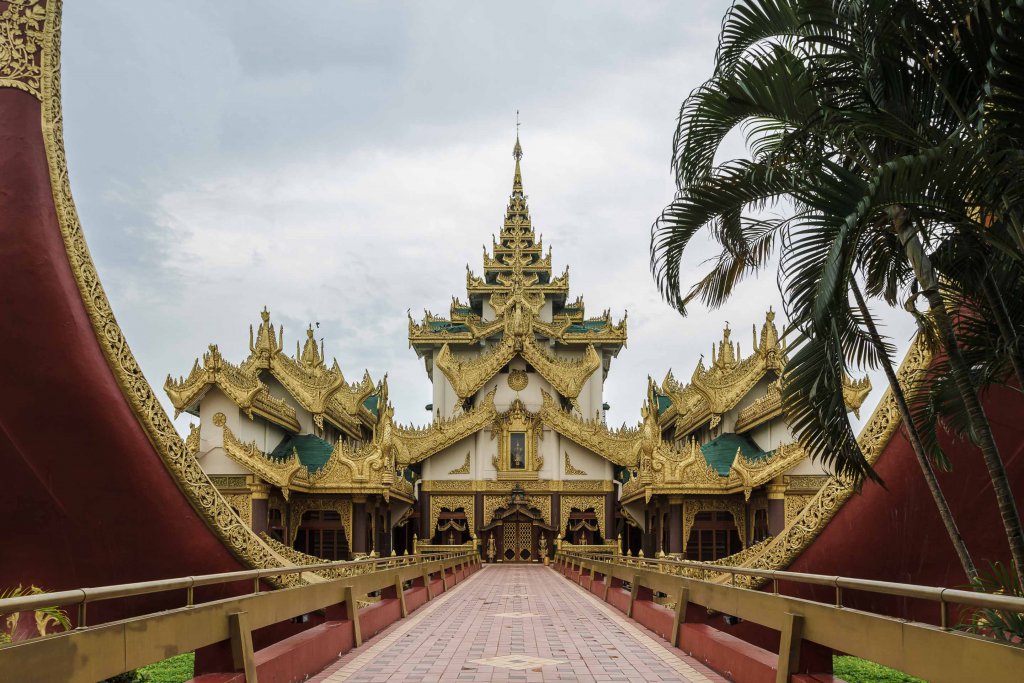
Karaweik Palace is visible from almost anywhere around the lake, the shore of which is split into two sections accessible to visitors. The larger one contains a few small temples reached by foot along wooden boardwalks. The smaller one features Karaweik Palace, a children’s playground and areas for music festivals. Just like most venues catering to foreign tourists and Yangon’s high society, the Palace was run by the Ministry of Trade before it was leased to a local entrepreneur in the late nineties. Although tourists these days have rather mixed views of the dinner buffets, the Karaweik’s kitchen used to be famous for the quality (and exorbitant prices) of its breads and ice creams. During the violent scenes in August 1988, the Palace’s staff invited monks from nearby monasteries to spend their nights here in safety.
